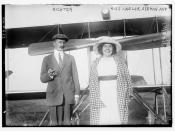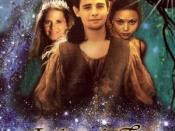Conrad Richter presents a historic fictional work describing the colonial frontier in The Light in the Forest. True Son, born as John Butler, was captured by the Lenni Lenape Indians at the age of four. He was adopted by them and raised as the son of their chief, Cuyloga. He became a part of the Indian culture. Later the Indians made a treaty with the whites and all white captives were to be returned to their people, including 15-year-old True Son. However, True Son had learned to hate the white men and their ways.
The Light in the Forest 'enlightened' me in various ways. It illustrates the spiritual relationship between Indians and nature as contrasted to the whites attitude. Indians live with nature, appreciating its beauty and enjoying its comfort while whites' seem to ignore the beauty and value nature only according to its productive usefulness. In The Light in the Forest, whites, for example, cut down the forest and clear land for farming.
I also was intrigued with how True Son spoke of his mother the Earth, his uncle the Moon, and his brother-in-law the Wind. In today's society we seem to concentrate on technology, while such oneness with nature is almost non-existent.
As an author, Conrad Richter appears to be a skilled writer. I found numerous strengths and only two weaknesses. One strength was his use of strong visual images. 'What he hungered for most was the sight of an Indian face again-his father's, deep red, shaped like a hawk's, used to riding the wind, always above the earth, letting nothing small or of the village disturb him-his mother's, fresh and brown yet indented with great arching cheek wrinkle born of laughing and smiling, framing the mouth, and across the forehead, horizontal lines like the Indian...


